The Isle of Man – its name derives from the sea god Manannan – nestles in a mild micro-climate in the middle of the choppy Irish Sea. There have been visitors to the island since Vikings landed back in the 8th Century, though tourists these days tend to sightsee rather than settle.
I’ve been fortunate enough to have been one of them for the past 40-odd years, except in 2020 when the Manx government closed the borders. Fully vaccinated 21st Century visitors were welcomed back from June 28.
I come back to see my family, but you can find masses to do in all seasons (for all ages) and the landscape is staggeringly beautiful and diverse.
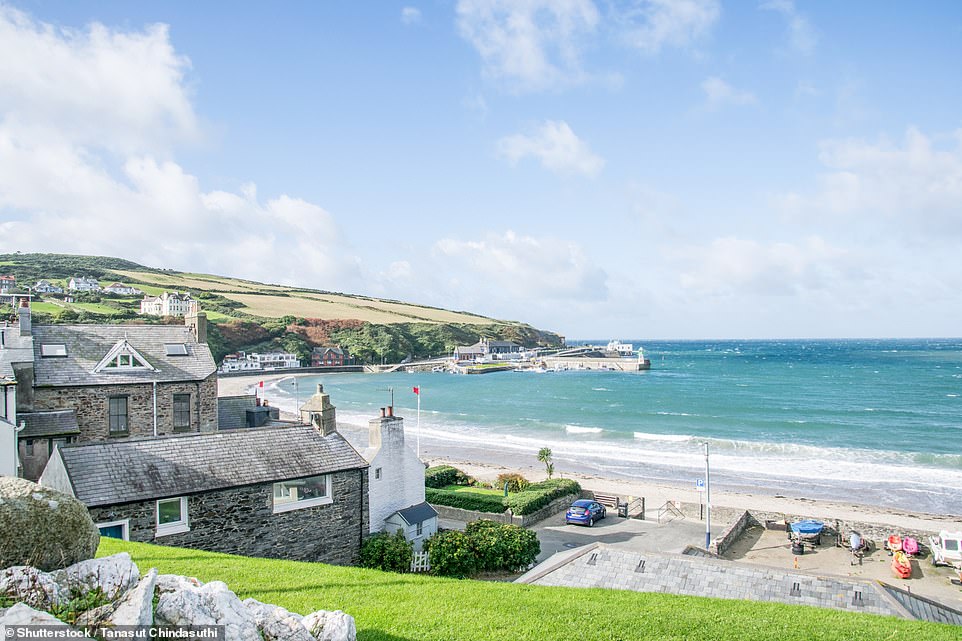
Port Erin is a sleepy village set around a sweeping curve of sand that stretches from the pier to Bradda Head
The island is only 33 miles long and 13 miles wide, but there is a great deal packed into such a small space. The main town is Douglas, on the east coast. Built around a crescent moon of a bay, it has a large and sturdy harbour protecting ships from sea storms.
Enjoy the shopping on Strand Street which runs parallel to the prom, or the restaurants and bars around the quayside that buzz with customers enjoying the view of the bobbing boats and tide as it comes and goes.
Snuggled between the quay and the sea is the Wine Down restaurant, which serves Manx scallops and crab, as well as Manx steak.
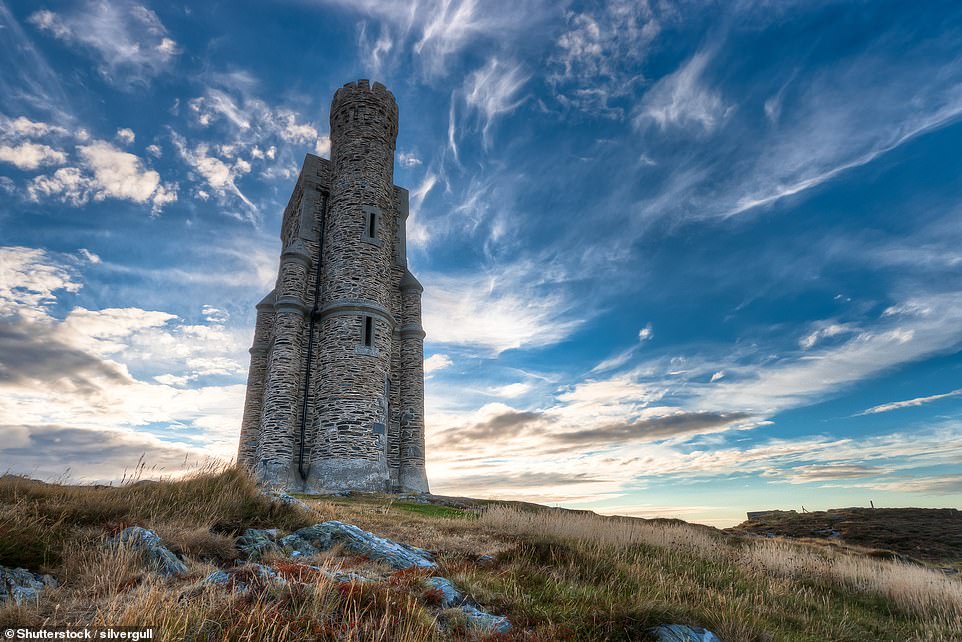
Milner’s Tower – named after a Victorian benefactor – has magnificent views stretching down the island
It’s worth noting that the Isle of Man’s farms are family run and its clean waters are mainly fished for king and queen scallops, crabs and lobsters plus langoustines. Manx kippers are still produced without the use of artificial dyes while a single creamery produces milk, cream, buttermilk and award-winning cheeses.
Head south from Douglas and cross the Fairy Bridge – a small stone bridge over a brook, which is said to be the home of the little people – to peaceful and pretty Castletown. There you’ll find the stunning and intact 13th Century Castle Rushen, originally built for a Viking king.
Port Erin is further south, a sleepy village set around a sweeping curve of sand which stretches from the pier to Bradda Head, a clifftop reached via a reasonably gentle walk up the gorse and heather-covered hillside. Milner’s Tower – named after a Victorian benefactor – is at the top, with magnificent views stretching down the island. There are masses of stunning routes for more dedicated hikers.
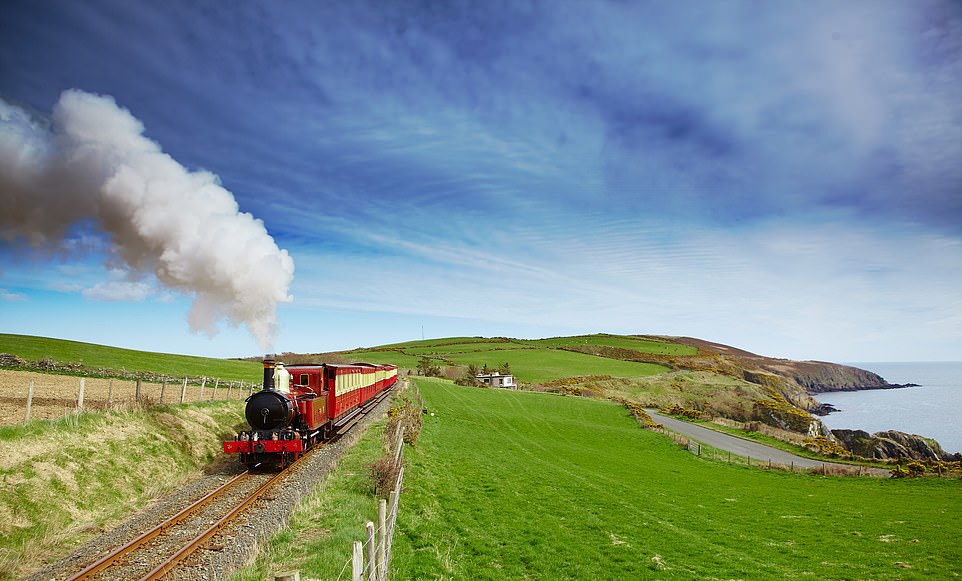
Still steaming: The island’s 1870s steam train chuffs and toots from Douglas to Port Erin
Stop off in Cregneash, high up in the southern hills, where a huddle of whitewashed cottages are the backdrop to a living museum of a 19th Century farming community, complete with the famous tail-free Manx cats and the island’s four-horned Loaghtan sheep. The brave might take a stroll to the Chasms – great, deep fissures cutting down the cliffs to the crashing sea. Only attempt if you have a head for heights (and no small children), and watch your step.
The Sound is the furthest southern point, a stretch of water that separates the little island called the Calf of Man from the mainland. This 600-acre nature reserve is packed with sea birds and wildlife – and there are dolphins and basking sharks in the waters.
To get there, book a return trip with one of the small boat operators in Port St Mary and Port Erin. Alternatively, just enjoy the panoramic views from the shelter of the Sound cafe, along with one of its excellent scones. Some people travel to the Isle of Man purely for the transport. Why? It’s actually one of the best ways to enjoy the scenery.
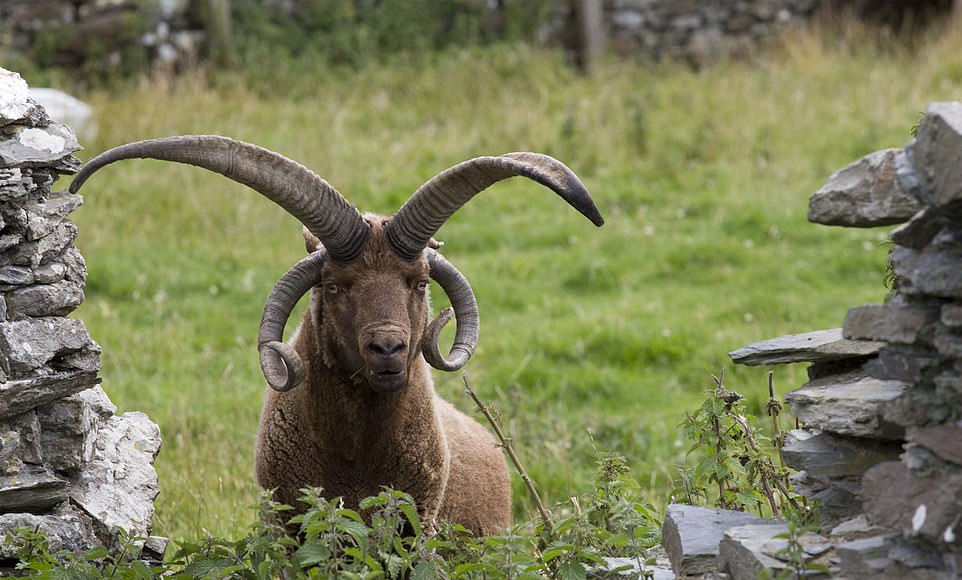
The Loaghtan is a rare breed sheep native to the Isle of Man. It has four impressive horns and a dark brown fleece
The Manx Electric Railway has been running trains up the east side of the island since 1893. Change at Laxey to get the Snaefell Mountain Railway to the top of the highest peak on the island. It’s said that you can see six kingdoms from the top: the Isle of Man, England, Ireland, Scotland, Wales and Heaven. The steam railway chuffs and toots from Douglas to Port Erin, and still uses original red, black and gold carriages from the 1870s.
The vast red Laxey Wheel is the largest working water wheel in the world, and after climbing to the top, have a coffee or fresh juice and cake at The Shed beach cafe.
Beaches on the island are many and astonishingly varied. Laxey Beach is stony until the tide goes out and exposes its sand. In the south the white sands of Fenella Beach connect St Patrick’s Isle – which hosts Viking-built Peel Castle – to the mainland. Or there’s the secluded and rocky Niarbyl Bay, which is harder to reach but worth the effort.
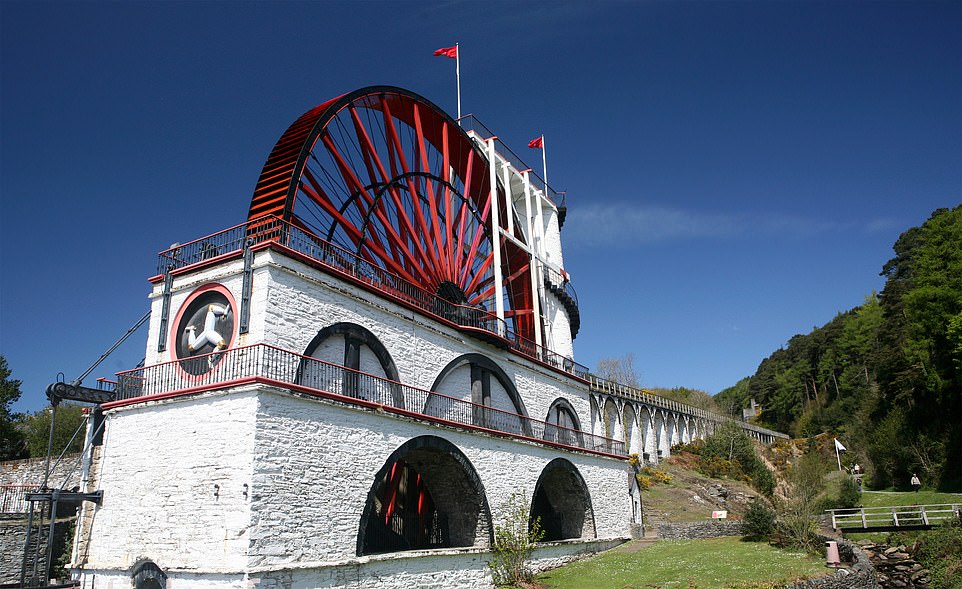
Pictured is the vast red Laxey Wheel, the largest working water wheel in the world
For Laxey Woollen Mills, which sells Manx tweed and tartan and wool, head to Tynwald, which is also the seat of the Manx governmen and the location of the Tynwald Mills shopping centre.
Although there are wonderful hotels such as the Claremont in Douglas, and there are luxury suites at the Sefton on the seafront, many prefer to explore the quirkier self-catering or B&B options. Albany House B&B in Peel has very pretty bedrooms and Ellan Vannin is a superbly refurbished self-catering cottage in Castletown, with rooftop terrace views of the castle and old harbour.
For more information, go to visitisleofman.com.
Source link : https://www.dailymail.co.uk/travel/escape/article-10027395/Fairies-fine-food-steam-trains-beaches-galore-visit-Isle-Man.html












